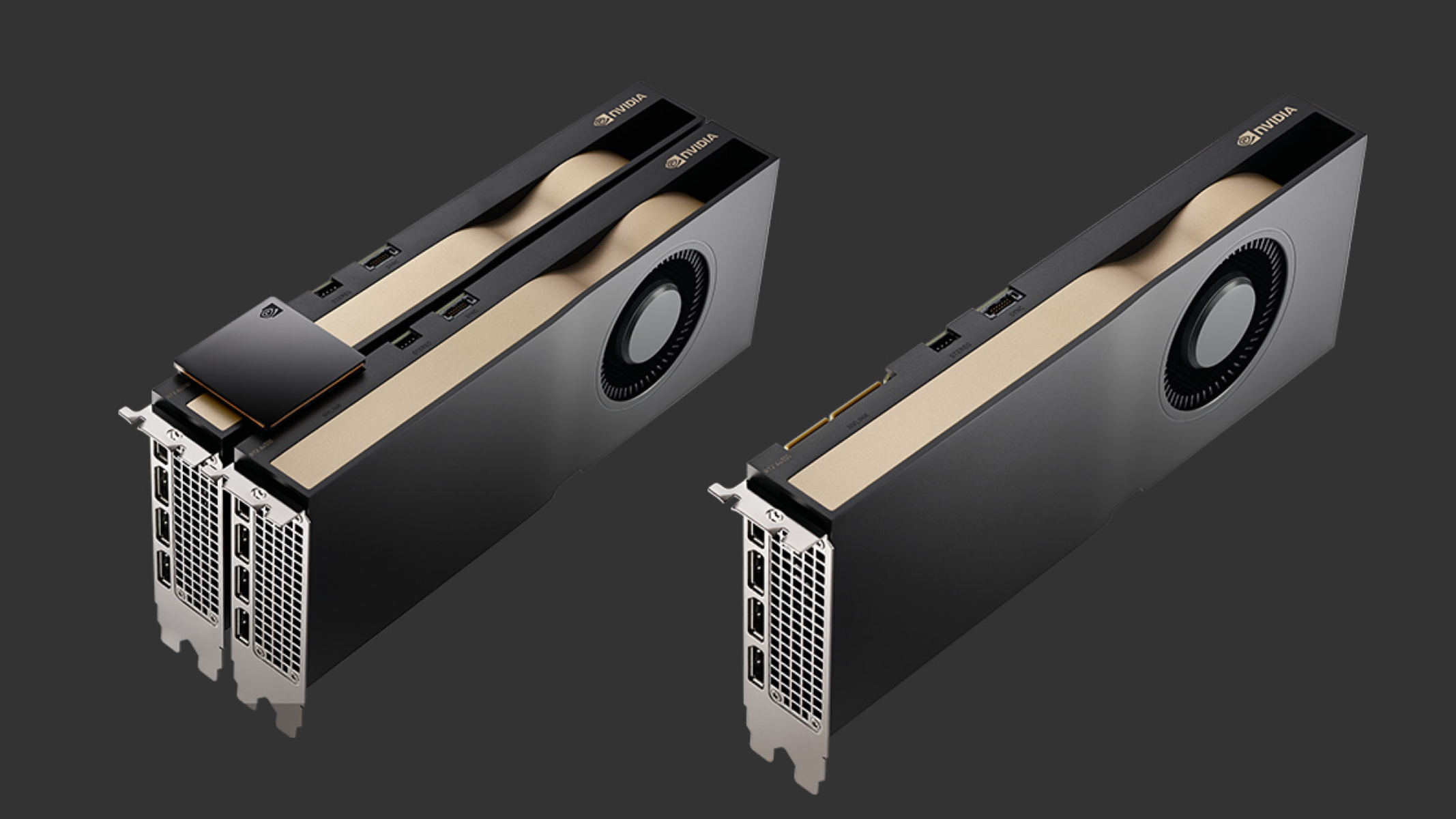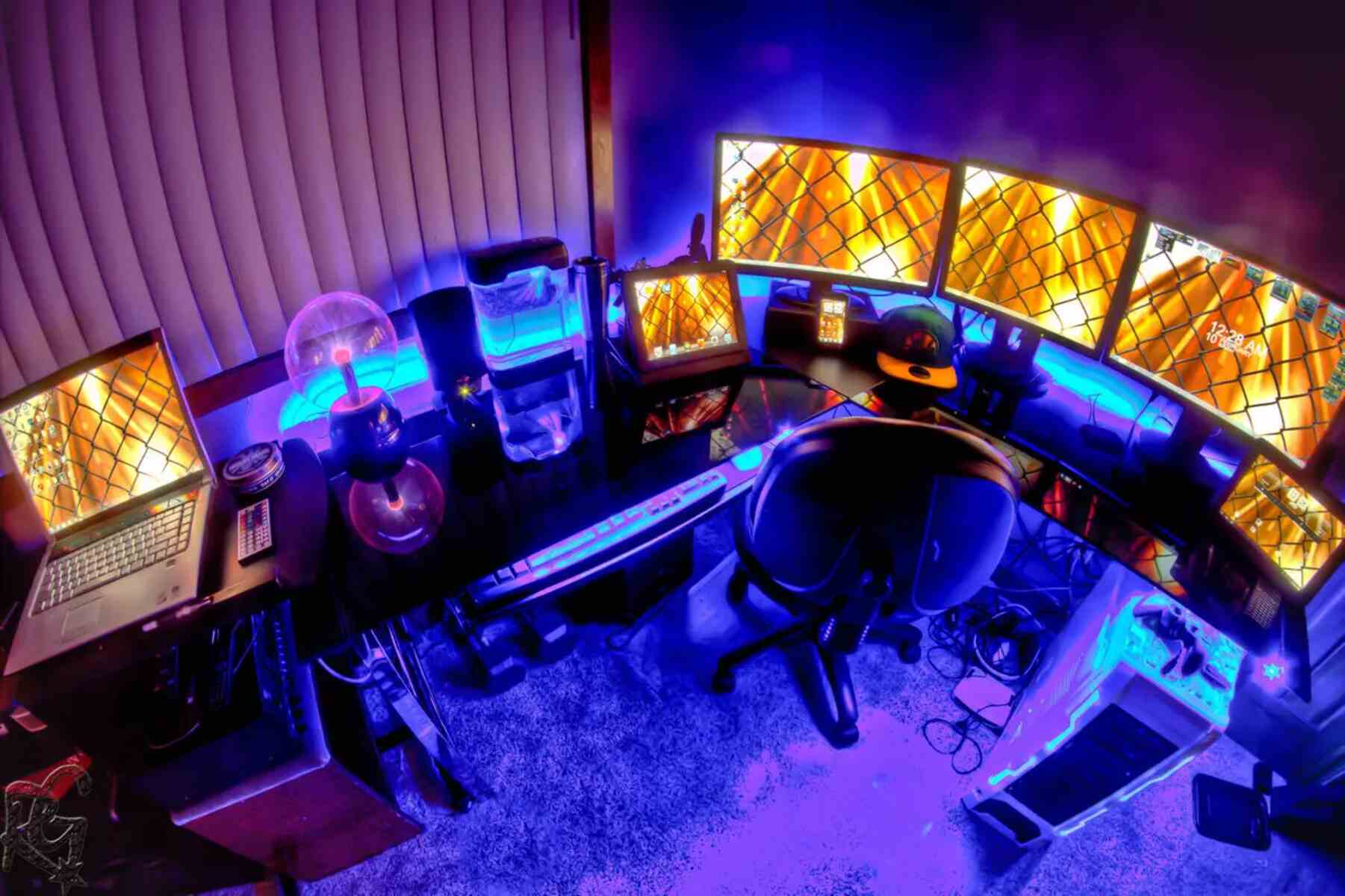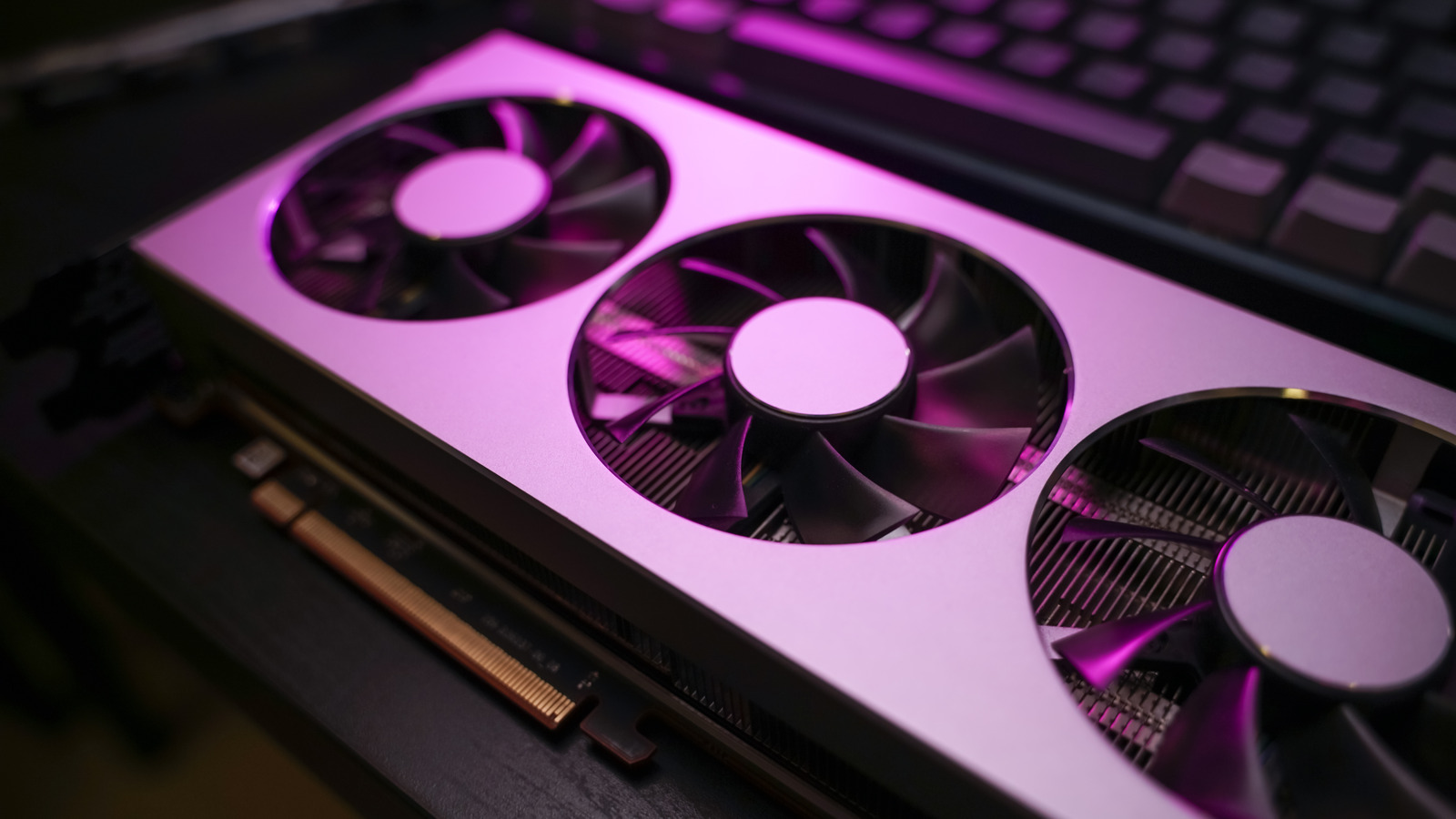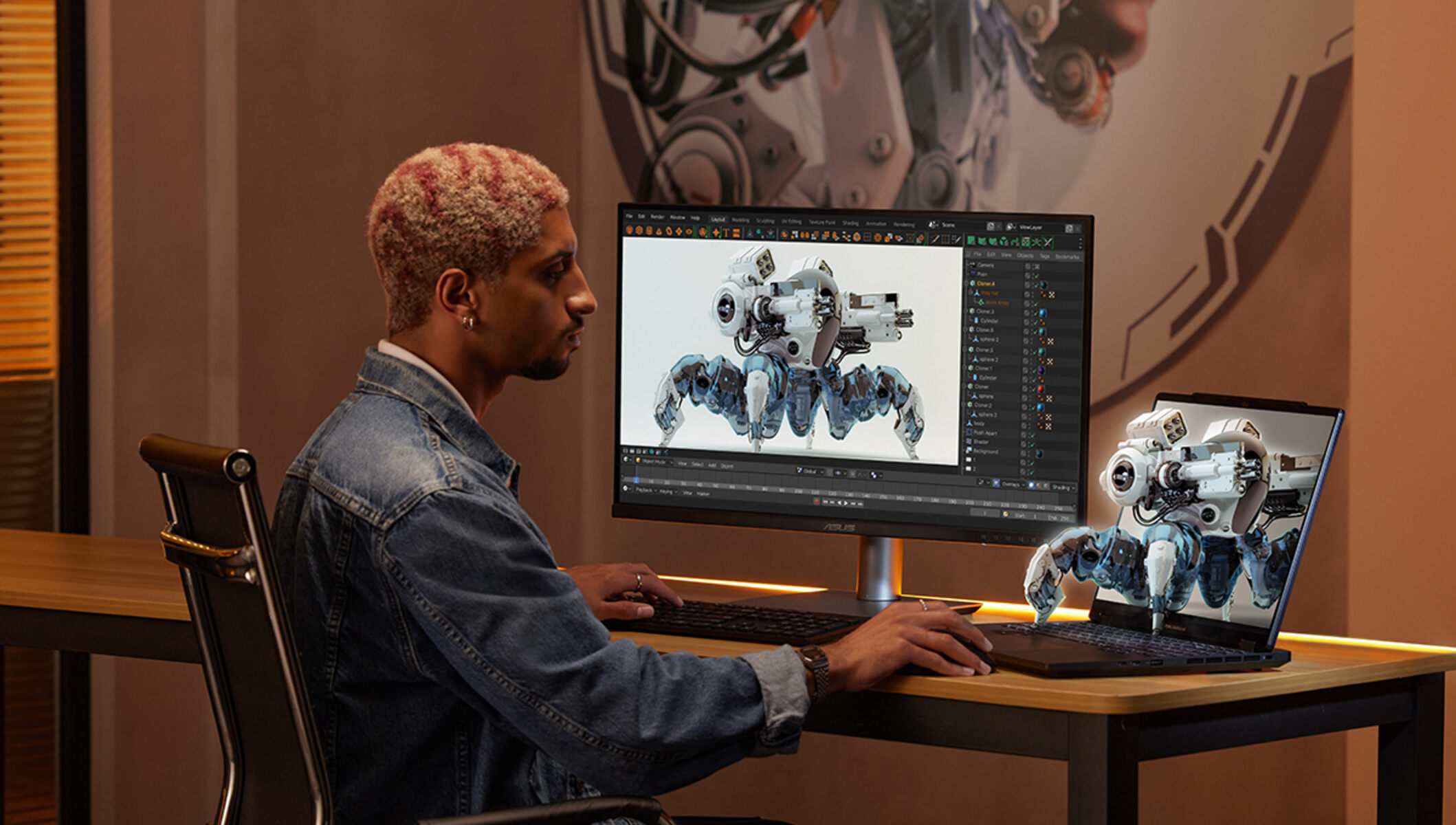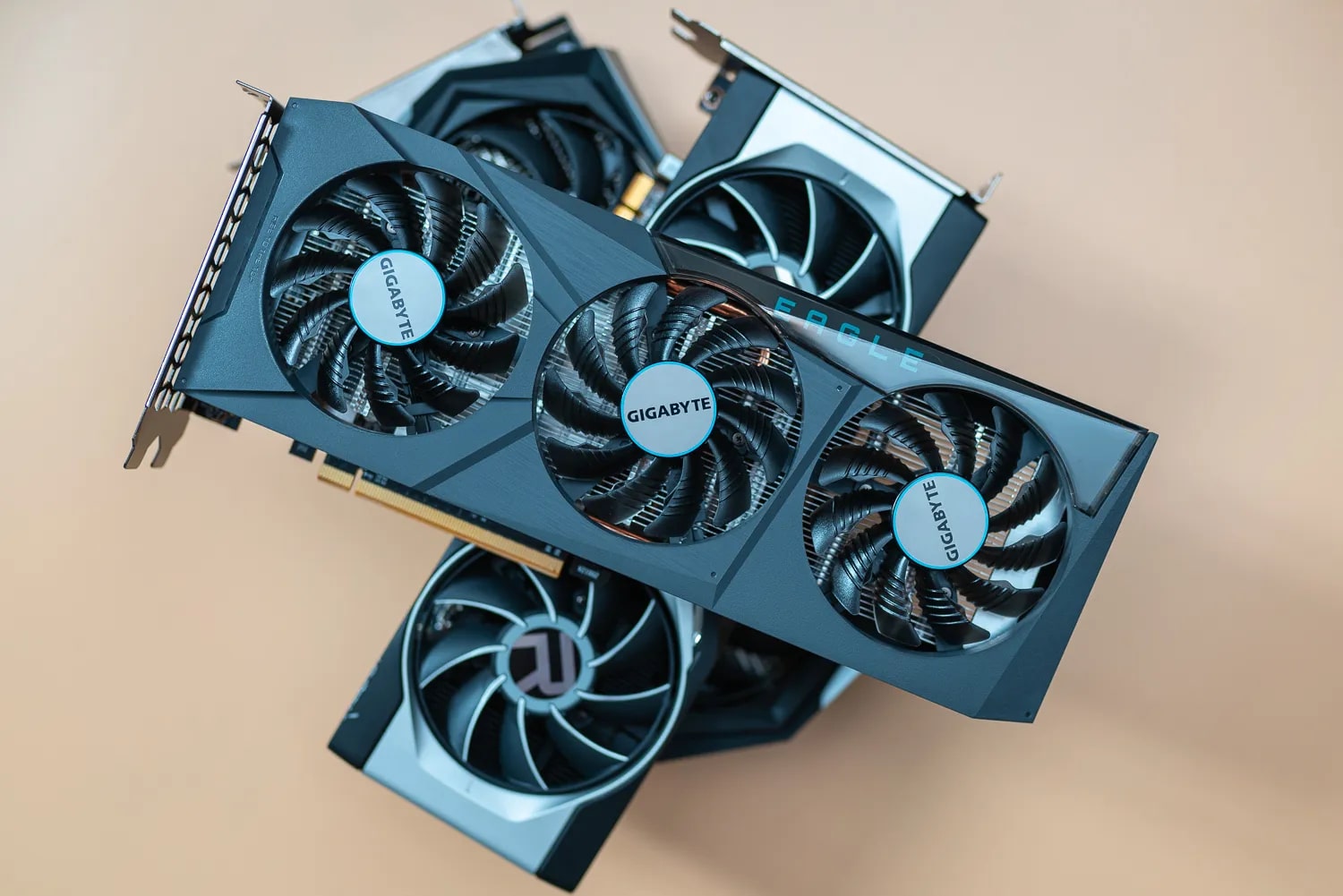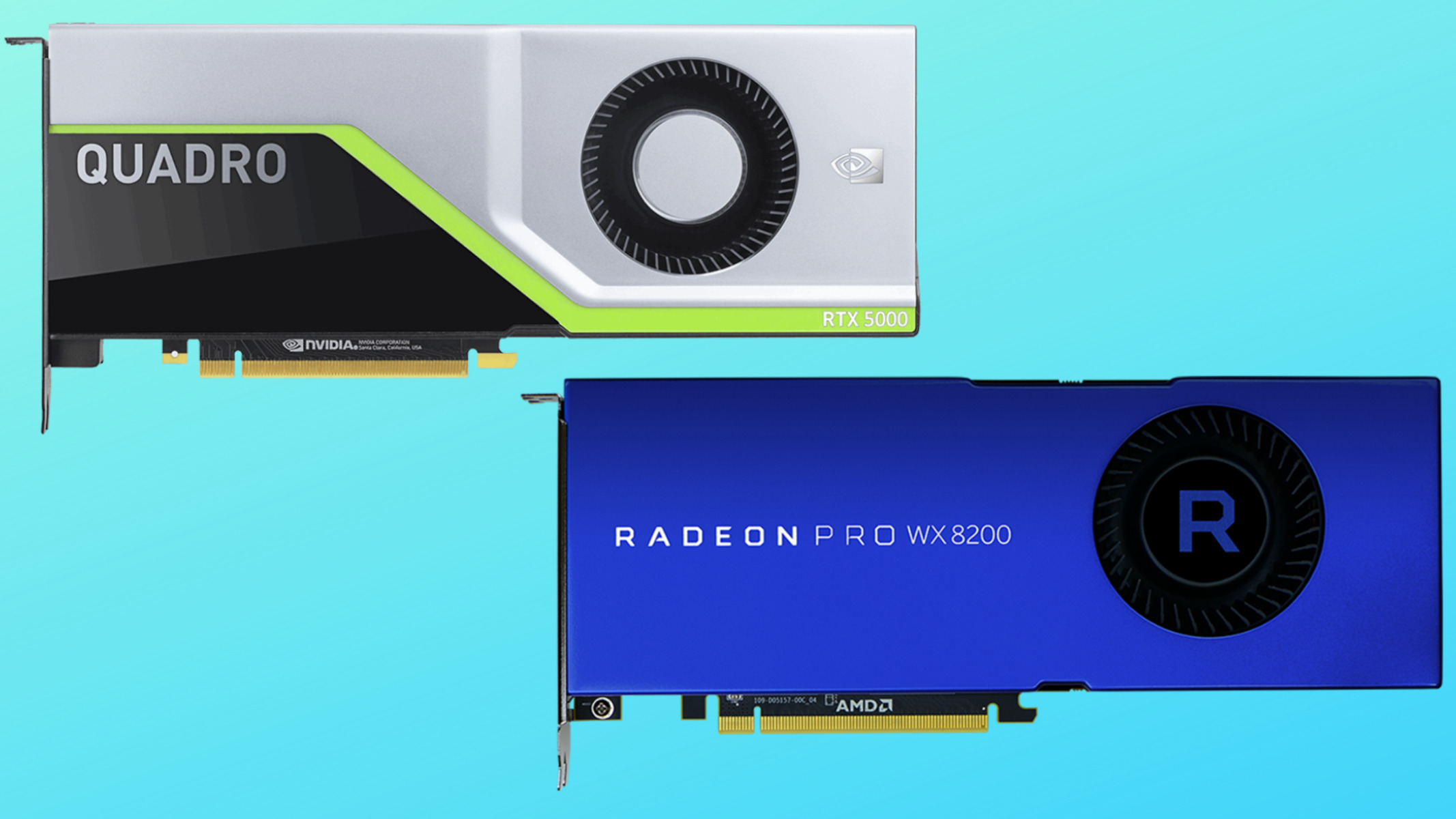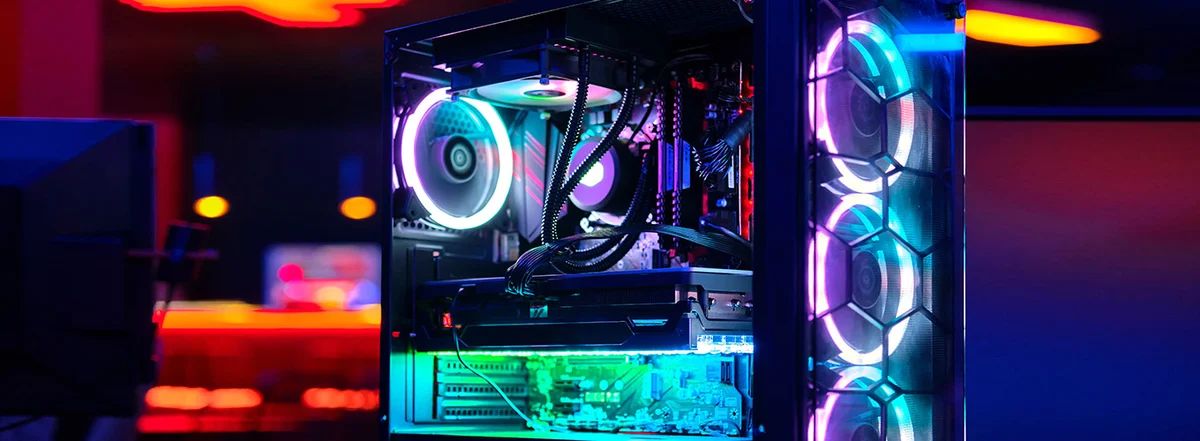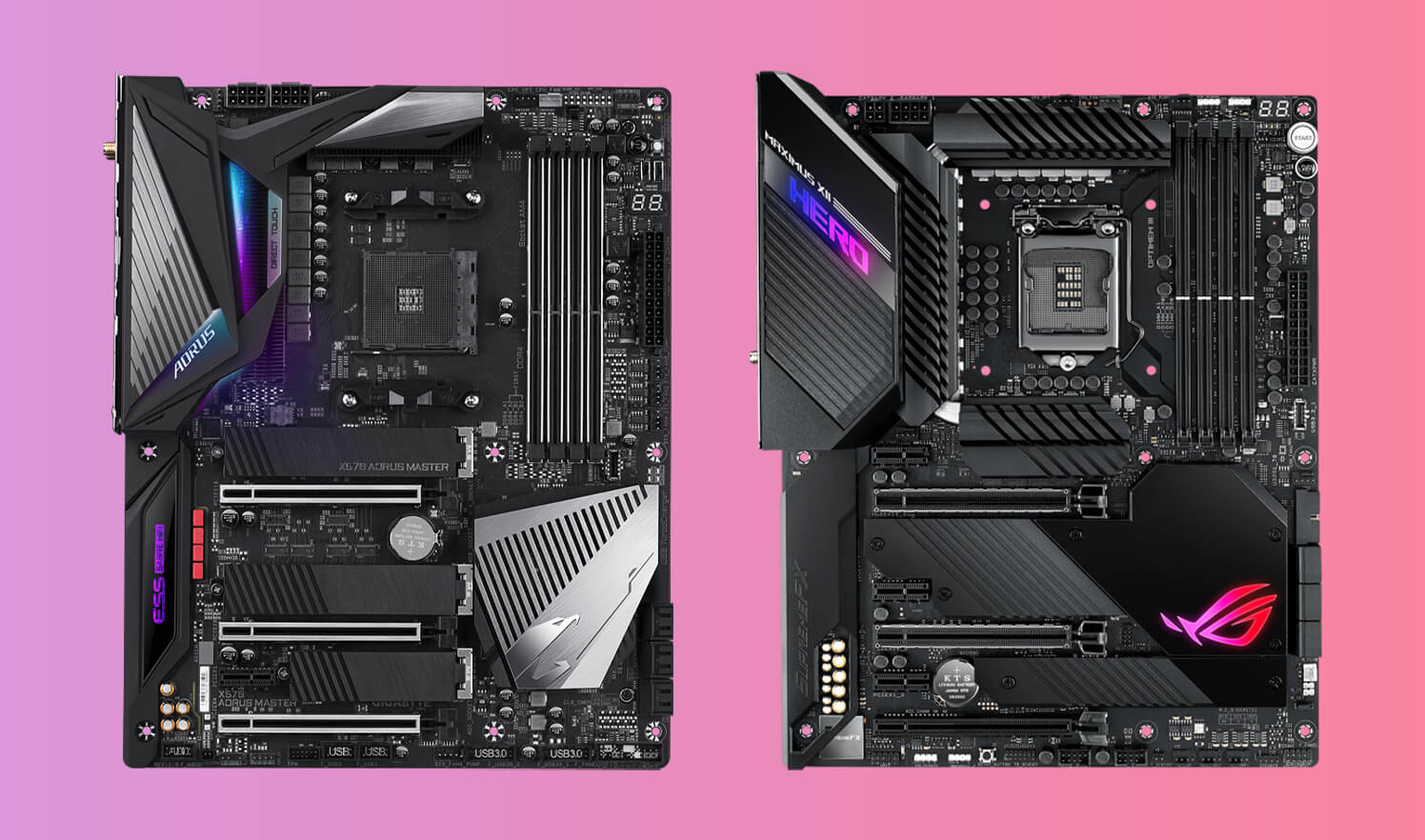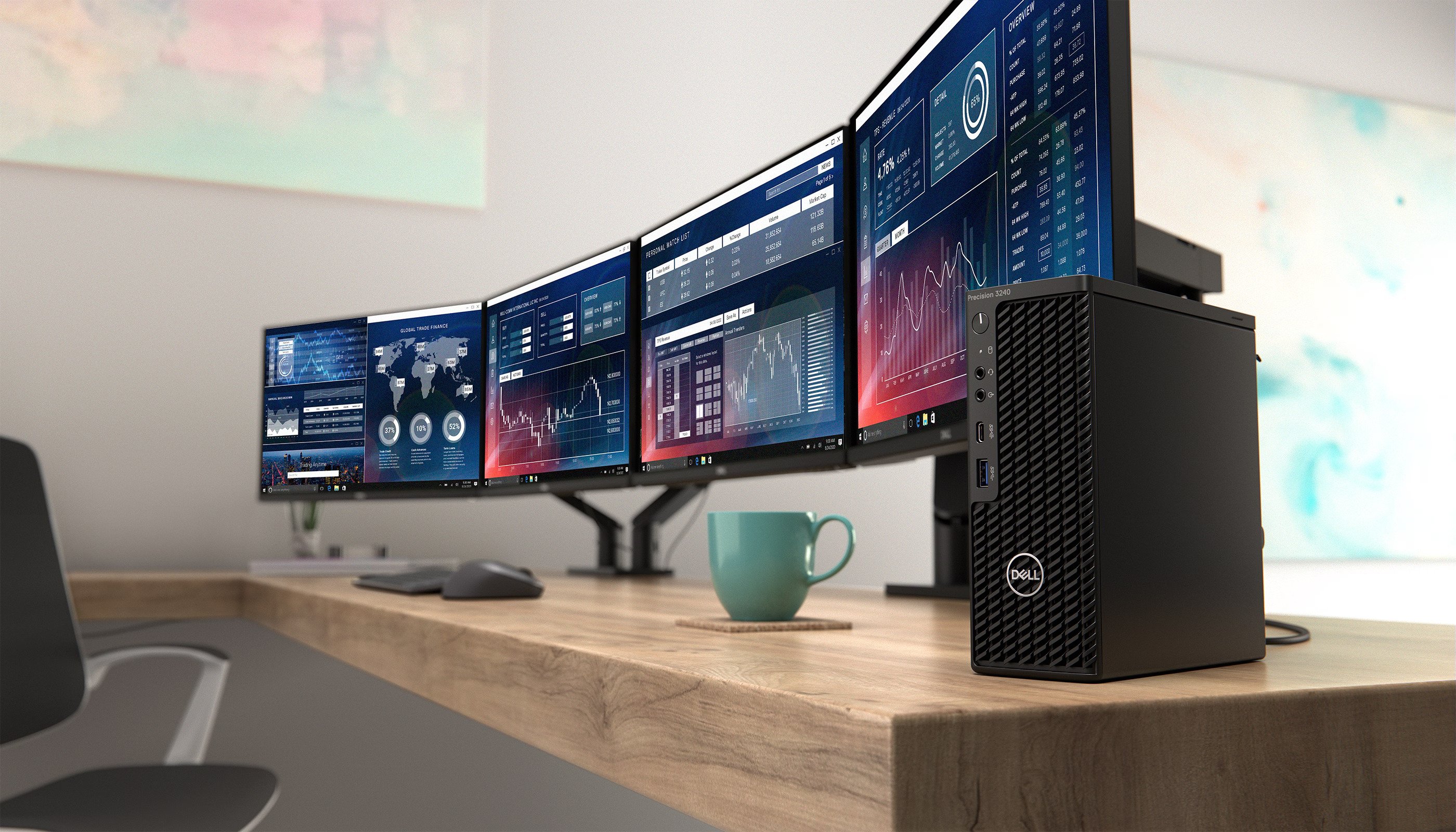Introduction
Welcome to the world of Workstation GPUs, where creative professionals and demanding industries harness the power of cutting-edge graphics technology to push the boundaries of visual creation. In today’s fast-paced digital landscape, having a high-performance graphics processing unit (GPU) is essential for professionals working with intensive tasks such as 3D modeling, video editing, graphic design, and scientific simulations.
Unlike consumer-grade GPUs found in gaming computers, Workstation GPUs are purpose-built to deliver exceptional performance, reliability, and accuracy in professional applications. These specialized GPUs offer a wide range of features and optimizations that enable professionals to work with complex projects efficiently.
In this article, we will explore the world of Workstation GPUs, their features, performance differences compared to consumer GPUs, and the applications and industries that benefit from their capabilities. We will also discuss the factors to consider when choosing a Workstation GPU and provide an overview of the leading brands and models available in the market.
Whether you’re a digital artist, architect, scientist, or engineer, understanding the capabilities of Workstation GPUs can greatly enhance your productivity and accelerate your creative and professional achievements. So let’s dive in and explore the fascinating world of Workstation GPUs.
What are Workstation GPUs?
Workstation GPUs, also known as professional GPUs or graphics cards, are specialized hardware components designed to deliver exceptional performance and reliability in professional applications. Unlike consumer-grade GPUs that focus primarily on gaming performance, Workstation GPUs are optimized for tasks such as 3D modeling, animation, video editing, computer-aided design (CAD), scientific simulations, and virtual reality (VR) content creation.
One of the key differentiators of Workstation GPUs is their ability to handle highly complex and demanding workloads. These GPUs are equipped with advanced parallel processing capabilities, massive memory bandwidth, and optimized drivers specifically tailored for professional applications. This enables professionals to work with larger datasets, render high-resolution images and videos, and perform complex calculations much faster compared to consumer-grade GPUs.
In addition to enhanced performance, Workstation GPUs offer features that cater to the needs of professionals. These include support for multiple displays, error correction codes (ECC) memory, real-time ray tracing, and enhanced GPU virtualization. These features ensure accurate and reliable rendering, data integrity, and efficient utilization of computing resources.
Workstation GPUs are also often certified by software vendors, such as Autodesk and Adobe, to ensure compatibility, stability, and optimal performance with professional applications. This certification process involves rigorous testing and validation to ensure seamless integration and optimal performance with industry-leading software.
Furthermore, Workstation GPUs are built to be highly reliable and durable, making them suitable for 24/7 operation. They undergo stringent quality control processes to ensure consistent performance and longevity, which is crucial for professionals who rely on their GPUs for their work.
Overall, Workstation GPUs deliver the power and precision required by professionals in various fields. They enable faster rendering, smoother real-time interactions, and improved productivity, ultimately helping professionals bring their creative visions to life.
Key Features of Workstation GPUs
Workstation GPUs offer a range of key features that differentiate them from consumer-grade GPUs and make them well-suited for professional applications. These features are specifically designed to enhance performance, reliability, and accuracy in demanding workloads. Let’s explore some of the key features of Workstation GPUs:
- Enhanced Performance: Workstation GPUs are equipped with high-performance processors and accelerated parallel processing capabilities, allowing professionals to handle complex tasks more efficiently. These GPUs deliver faster rendering, simulations, and computations compared to consumer-grade GPUs, enabling professionals to work with large datasets and perform intricate calculations in real-time.
- ECC Memory: Error correction codes (ECC) memory is a critical feature in Workstation GPUs that helps ensure data accuracy and integrity. ECC memory can find and correct errors that may occur during data storage or transmission, reducing the risk of data corruption and improving overall reliability.
- Multiple Display Support: Professionals often require multiple displays to enhance their productivity. Many Workstation GPUs support multiple displays, allowing professionals to work on multiple projects simultaneously or provide a more immersive experience in fields such as design, architecture, and scientific visualization.
- Industry Certification: Workstation GPUs undergo rigorous testing and certification processes by software vendors to ensure compatibility and optimal performance with professional applications. These certifications assure professionals that their chosen Workstation GPU will work seamlessly with industry-standard software, guaranteeing stability and high performance.
- GPU Virtualization: Workstation GPUs come with advanced virtualization capabilities. This allows professionals to partition the GPU into multiple virtual GPUs, allowing for efficient resource allocation and utilization across multiple virtual machines or users. GPU virtualization is particularly beneficial in industries such as virtual desktop infrastructure (VDI) and cloud gaming.
- Real-Time Ray Tracing: Real-time ray tracing is a powerful rendering technique used to create realistic lighting and reflections in real-time. Workstation GPUs with real-time ray tracing capabilities enable professionals to achieve stunning visual effects and highly realistic simulations without sacrificing performance.
In summary, the key features of Workstation GPUs are optimized performance, ECC memory, multiple display support, industry certifications, GPU virtualization, and real-time ray tracing. These features make Workstation GPUs indispensable tools for professionals in various industries, allowing them to achieve exceptional performance, accuracy, and reliability in their work.
Performance Difference Between Workstation GPUs and Consumer GPUs
While both Workstation GPUs and consumer-grade GPUs serve the purpose of rendering graphics, there are significant performance differences between the two. These differences arise from the unique demands of professional applications compared to gaming-centric tasks. Let’s explore the key performance differences:
Specialized Workloads: Workstation GPUs are specifically designed to handle complex and demanding workloads, such as 3D modeling, CAD, and scientific simulations. They are optimized for tasks that require intensive data processing, precision, and accuracy. Consumer GPUs, on the other hand, prioritize gaming performance, focusing more on high frame rates and visual enhancements.
Compute Power: Workstation GPUs often feature higher computational power compared to consumer-grade GPUs. They have more processing cores and higher memory bandwidth, allowing for faster calculations and simulations. This increased compute power enables professionals to render complex scenes, perform intricate simulations, and handle large datasets with ease.
Floating-Point Performance: Floating-point operations are crucial in professional applications, especially in scientific simulations, data analysis, and engineering simulations. Workstation GPUs excel in floating-point performance, offering higher precision and accuracy in calculations compared to consumer GPUs. This precision is essential in fields where accurate results are paramount.
Memory Capacity: Workstation GPUs generally come with larger memory capacities compared to consumer-grade GPUs. This allows professionals to work with larger datasets and handle more complex projects without worrying about running out of memory. The larger memory capacity also improves performance by reducing the need for data transfers between the GPU and system memory.
Drivers and Software Optimization: Workstation GPUs are accompanied by optimized drivers and specialized software that is tuned to work seamlessly with professional applications. These drivers and software configurations provide stability, compatibility, and improved performance with industry-leading software. Consumer-grade GPUs may not have the same level of software optimization for professional applications.
Concurrent Computing: Workstation GPUs often excel in supporting concurrent computing, allowing multiple tasks or applications to run simultaneously. This feature enables professionals to multitask efficiently, working on multiple projects or running multiple simulations concurrently, thereby maximizing productivity and reducing overall workflow time.
In summary, while consumer-grade GPUs are primarily focused on gaming performance, Workstation GPUs are optimized for professional applications. They offer superior compute power, precision, larger memory capacities, and driver optimizations specifically tailored for professional workloads. These characteristics make Workstation GPUs the ideal choice for professionals who require exceptional performance, accuracy, and reliability in their work.
Applications and Industries that Benefit from Workstation GPUs
Workstation GPUs play a crucial role in various industries and professional applications where high-performance graphics processing is essential. Let’s explore some of the industries and applications that benefit greatly from the capabilities of Workstation GPUs:
1. CAD and Engineering: Computer-aided design (CAD) software is extensively used in industries such as architecture, engineering, and product design. Workstation GPUs provide the necessary power and precision to render complex 3D models, perform simulations, and visualize designs in real-time. This enables engineers and designers to bring their concepts to life and make informed decisions based on accurate visual representations.
2. Media and Entertainment: Workstation GPUs play a vital role in the media and entertainment industry, where high-quality visuals, animations, and video editing are paramount. They enable professionals in these fields to work with high-resolution videos, create realistic 3D animations, and achieve stunning visual effects. Professional software, such as Autodesk Maya, Adobe Premiere Pro, and Cinema 4D, are optimized to take full advantage of the performance and features offered by Workstation GPUs.
3. Architecture and Construction: Architects and construction professionals rely on Workstation GPUs to visualize and present their designs in realistic 3D environments. These GPUs facilitate real-time rendering, allowing architects to manipulate building designs, assess lighting and material choices, and simulate how their creations will look in different contexts. Workstation GPUs greatly enhance the efficiency and accuracy of the design process in architectural and construction industries.
4. Scientific Simulations: Workstation GPUs are crucial in scientific research and simulations. They enable scientists and researchers to perform complex calculations, run simulations, and visualize data in real-time. From climate modeling and fluid dynamics to molecular simulations and computational biology, Workstation GPUs expedite scientific discoveries by providing the computational power needed for accurate and efficient simulations.
5. Virtual Reality and Augmented Reality: Workstation GPUs are essential for creating immersive virtual reality (VR) and augmented reality (AR) experiences. These GPUs power the rendering of realistic 3D environments and ensure smooth and responsive interactions. They enable professionals in the gaming industry, medical field, architectural visualization, and more to create realistic and immersive experiences for their target audiences.
6. Finance and Data Visualization: Data-driven industries, such as finance and data analytics, rely on Workstation GPUs to process and visualize vast amounts of data. These GPUs accelerate complex financial calculations, improve data visualization performance, and enhance the accuracy of predictive models. Workstation GPUs play a crucial role in helping finance professionals make informed decisions based on accurate data analysis.
These are just a few examples of the many industries and applications that benefit from the capabilities of Workstation GPUs. The exceptional performance, accuracy, and reliability of these GPUs significantly contribute to the success and advancements in various professional fields, enabling professionals to achieve their goals more efficiently and effectively.
Brands and Models of Workstation GPUs
Several brands offer a wide range of Workstation GPUs, each with their own unique features and capabilities. Let’s explore some of the leading brands and models in the Workstation GPU market:
1. NVIDIA: NVIDIA is a prominent player in the Workstation GPU market, offering a range of powerful GPUs under their Quadro and RTX series. The NVIDIA Quadro GPUs are widely recognized for their exceptional performance, extensive software certifications, and reliability. The RTX series, featuring real-time ray tracing technology, provides enhanced capabilities for professionals in industries such as gaming, animation, and visual effects.
2. AMD: AMD’s Radeon Pro series offers competitive Workstation GPUs that cater to the needs of professionals. These GPUs provide excellent performance, support for multiple displays, and enhanced power efficiency. AMD Radeon Pro GPUs are known for their affordability and compatibility with professional applications.
3. Intel: Intel provides Workstation GPUs under their Xe series. These GPUs offer compelling performance and power efficiency, making them suitable for professionals in various industries. Intel Xe GPUs are especially ideal for industries such as machine learning and artificial intelligence, where high-performance computing is essential.
4. Matrox: Matrox is a trusted brand known for its reliable and multi-display Workstation GPUs. Matrox Graphics cards are specifically designed for industries such as medical imaging, video walls, and surveillance. These GPUs excel in delivering high-quality displays across multiple monitors simultaneously.
5. PNY: PNY offers a range of Workstation GPUs under their NVIDIA Quadro series. PNY Quadro GPUs are known for their exceptional performance and reliability, making them popular choices among professionals. These GPUs provide the power and precision required for industries such as product design, architecture, and content creation.
6. ASUS: ASUS is a well-known brand that offers a variety of Workstation GPUs targeted at professionals. Their Workstation GPUs provide excellent performance, stability, and compatibility with professional applications. ASUS GPUs are particularly popular among gamers who also require powerful hardware for professional tasks.
7. MSI: MSI’s Workstation GPUs, under their NVIDIA Quadro series, offer great performance and reliability. These GPUs are designed to meet the demands of professionals in industries such as CAD, architecture, and video editing. MSI Workstation GPUs are known for their durability and advanced cooling solutions, allowing for extended periods of high-performance usage.
These are just a few examples of the many brands and models available in the Workstation GPU market. When choosing a Workstation GPU, it is essential to consider factors such as performance requirements, software compatibility, and budget. Reviewing product specifications, user reviews, and consulting with professionals in your industry can help you select the best Workstation GPU to meet your specific needs.
Factors to Consider When Choosing a Workstation GPU
When selecting a Workstation GPU, there are several key factors to consider to ensure that it meets your specific requirements. Let’s explore the important factors to consider when choosing a Workstation GPU:
- Performance Requirements: Assess your performance needs based on the specific applications and tasks you will be using the GPU for. Consider factors such as computational power, memory capacity, and floating-point performance to ensure that the GPU can handle your workload efficiently.
- Software Compatibility: Check the compatibility of the GPU with the professional applications you use. Look for certifications from software vendors to ensure seamless integration and optimal performance. Compatibility is crucial to avoid any issues or limitations when working with the software.
- Memory Capacity: Determine the amount of memory required for your work. Consider the size of your datasets and the complexity of your projects. Higher memory capacity allows for the smooth handling of larger models, higher resolution textures, and better overall performance.
- Power Efficiency: Consider the power efficiency of the GPU, especially if you work extensively or require 24/7 operation. A power-efficient GPU can reduce energy consumption and heat generation, resulting in lower running costs and a more stable system.
- Form Factor and Cooling: Choose a GPU that fits your system’s form factor and has proper cooling solutions. Ensure that the GPU will fit comfortably within your workstation or server case and that it can be adequately cooled to maintain optimal performance and reduce the risk of overheating.
- Budget: Determine your budget for the Workstation GPU. Consider the balance between performance and cost-effectiveness. While high-end GPUs offer exceptional performance, they may not always be necessary or within budget. Look for GPUs that offer the best value and meet your specific requirements.
- Future Expansion: Consider the potential for future expansion and compatibility with your system. Ensure that the GPU will be compatible with future upgrades or additions you may make to your workstation. This will allow you to extend the usefulness of the GPU and avoid the need for frequent upgrades.
- Support and Warranty: Evaluate the customer support and warranty offered by the GPU manufacturer. Look for brands with a good reputation for providing timely and reliable support in case of any issues. A solid warranty can give you peace of mind and protect your investment.
By considering these factors when choosing a Workstation GPU, you can make an informed decision based on your specific needs and budget. Take the time to research and compare different models, read user reviews, and consult with professionals in your field to find the Workstation GPU that will deliver the performance and reliability required for your work.
Pricing and Budget Considerations for Workstation GPUs
When considering a Workstation GPU, pricing and budget play a significant role in the decision-making process. While high-end, feature-rich GPUs may offer exceptional performance, they can come with a hefty price tag. It’s important to find the right balance between performance and cost-effectiveness. Let’s explore some pricing and budget considerations when selecting a Workstation GPU:
1. Performance Needs: Evaluate your performance requirements and consider the minimum specifications that meet your specific workload. It’s essential to avoid overspending on a GPU that exceeds your needs. Assess the demands of your applications and choose a GPU that offers the necessary performance without unnecessary additional capabilities.
2. Tiered Models: GPU manufacturers often offer a range of models within their product lineup. These models cater to different budget ranges and performance levels. Consider the mid-tier options, which often strike a good balance between performance and affordability, providing a cost-effective solution for many professional applications.
3. Previous Generation GPUs: Newer generation GPUs tend to come with higher price tags due to their advanced features and improved performance. Consider opting for a previous generation GPU that still meets your performance requirements. These GPUs often see price reductions when newer models are released, making them a more budget-friendly option.
4. Refurbished or Pre-Owned GPUs: If you’re on a tighter budget, consider refurbished or pre-owned GPUs. These can offer considerable cost savings while still providing reliable performance. Ensure that the refurbished or pre-owned GPU comes from a reputable source and has been thoroughly tested to ensure its functionality.
5. Consider Alternatives: Look for alternative brands or models that offer competitive performance and features at a more affordable price point. While some well-known brands may have premium pricing, there are often budget-friendly options available from other manufacturers without compromising on performance or reliability.
6. Deals and Discounts: Keep an eye out for deals, promotions, and discounts on Workstation GPUs. Manufacturers and retailers frequently offer special pricing during sales events or when new models are released. These promotions can provide an opportunity to secure a high-performance GPU at a lower cost.
7. Future Upgrades: Consider the lifespan and future needs of your workstation. Investing in a more powerful GPU upfront might be a worthwhile expense if you anticipate working on more demanding projects or plan to keep your workstation for an extended period. This can save you from needing to upgrade sooner and potentially reduce overall costs in the long run.
Remember that while price is an important consideration, it should not be the sole determining factor. It’s crucial to strike a balance between your budget and the performance requirements of your work. Take the time to research, compare prices, read user reviews, and consider the overall value that the Workstation GPU offers in terms of performance, reliability, and longevity for your specific needs.
Top Workstation GPUs in the Market
There are several top-tier Workstation GPUs available in the market, each offering exceptional performance and features tailored for professional applications. Let’s explore some of the leading Workstation GPUs that professionals rely on for their demanding workloads:
1. NVIDIA Quadro RTX 8000: The NVIDIA Quadro RTX 8000 is a powerhouse GPU designed for professionals who require the utmost performance and capabilities. With a massive 48 GB of GPU memory, real-time ray tracing, and optimized AI capabilities, it excels in industries such as film production, engineering simulations, and deep learning.
2. AMD Radeon Pro WX 9100: AMD’s Radeon Pro WX 9100 is a high-performance GPU that delivers excellent compute power and visualization capabilities. With 16 GB of HBM2 memory, support for multiple displays, and optimized for CAD, 3D rendering, and virtual reality, it is a popular choice for professionals in architecture, product design, and content creation.
3. Intel Xe-HPG: The Intel Xe-HPG series is Intel’s foray into the high-performance Workstation GPU market. While specific models and details are yet to be unveiled, Intel aims to compete with NVIDIA and AMD in terms of performance and capabilities, offering professionals in various industries an alternative choice for their Workstation GPU needs.
4. NVIDIA Quadro P5000: The NVIDIA Quadro P5000 is a powerful and versatile Workstation GPU that strikes a good balance between performance and affordability. With 16 GB of GPU memory, exceptional performance in applications such as CAD, animation, and VR, and extensive software certifications, it remains a popular choice among professionals.
5. AMD Radeon Pro WX 7100: The AMD Radeon Pro WX 7100 provides solid performance at a more affordable price point. With 8 GB of GDDR5 memory, support for multiple displays, and optimized for CAD, video editing, and rendering, it offers professionals in various industries a cost-effective option without compromising on performance.
6. NVIDIA Quadro RTX 4000: The NVIDIA Quadro RTX 4000 is a mid-range Workstation GPU that delivers a good balance of performance and price. With 8 GB of GPU memory, real-time ray tracing capabilities, and support for multiple displays, it caters to professionals in architecture, engineering, and design who require a high-performance GPU at a more affordable price point.
These are just a few examples of the top Workstation GPUs in the market. When selecting a Workstation GPU, it is important to consider your specific performance requirements, budget, and software compatibility. Researching and comparing the features, performance benchmarks, and user reviews of different models will help you find the Workstation GPU that best suits your needs and empowers you to excel in your professional endeavors.
Conclusion
Workstation GPUs are powerful tools that enable professionals in various industries to unleash their creativity and achieve exceptional results. Whether you’re a graphic designer, architect, scientist, or engineer, having a high-performance GPU tailored for professional applications can significantly enhance your workflow and productivity.
In this article, we have explored what Workstation GPUs are and discussed their key features and performance differences compared to consumer-grade GPUs. We have also examined the applications and industries that benefit from Workstation GPUs, along with an overview of the top brands and models available in the market.
When choosing a Workstation GPU, it’s essential to consider factors such as performance requirements, software compatibility, budget, and future expansion needs. Balancing these considerations will help you make an informed decision and select the right GPU that meets your specific needs.
Whether you opt for a high-end GPU like the NVIDIA Quadro RTX 8000 or a more budget-friendly option like the AMD Radeon Pro WX 7100, the right Workstation GPU will enable you to tackle complex tasks, render realistic visuals, and accelerate your professional achievements.
As technology advances, it’s important to stay informed about the latest developments in the Workstation GPU market. Keep an eye out for new releases, software updates, and advancements in features like real-time ray tracing, AI acceleration, and virtualization.
In conclusion, choosing the right Workstation GPU is crucial for professionals who rely on high-performance graphics processing to excel in their respective fields. Consider your specific needs, evaluate the options available in the market, and select a Workstation GPU that will empower you to bring your creative ideas to life and achieve remarkable results.







